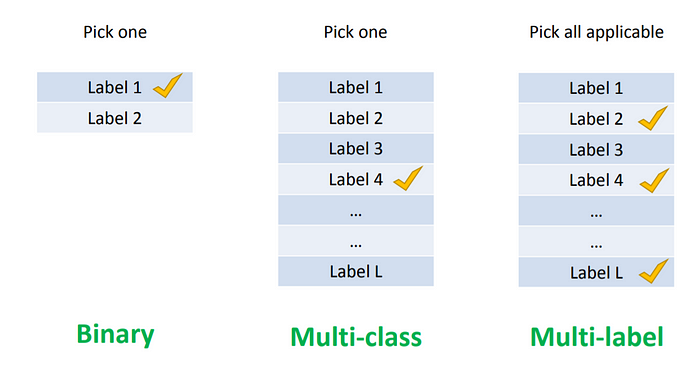Multiclass Classification vs. Multi-label Classification
Introduction:
In the field of machine learning, classification is a fundamental task where data is categorized into predefined classes or labels based on specific features. Multiclass classification and multi-label classification are two popular techniques used to handle different types of classification problems. This blog aims to provide a clear understanding of these concepts and illustrate their differences and applications.
Lets go one by one method and discuss in detail,
1. Multiclass Classification:
Multiclass classification, also known as single-label classification, involves categorizing data into mutually exclusive classes. Each data point belongs to one and only one class, making it suitable for scenarios where items can be distinctly assigned to one category.
Use Cases:
- Handwritten Digit Recognition: Assigning a digit (0–9) to a given handwritten image.
- Disease Diagnosis: Identifying the disease category based on patient symptoms.
2. Multi-label Classification:
Multi-label classification deals with instances that can be associated with multiple labels simultaneously. This technique is ideal for tasks where data points may belong to more than one class at the same time.
Use Cases:
- Scene Classification: Assigning multiple labels (e.g., beach, sunset, people) to an image.
- Text Categorization: Labeling articles with multiple topics they cover.
Differences between Binary, Multiclass and Multi-label Classification:

- In binary classification, there are only two classes to predict, each instance belongs to either of them. e.g. Classifying an image of an animal into cat or dog category.
- In multiclass classification, each instance belongs to a single class, while in multi-label classification, instances can be associated with multiple classes.
- The output layer of a multiclass classification model typically consists of one node per class, whereas in multi-label classification, each class is represented by one node, and multiple nodes can be active simultaneously.
- Evaluation metrics differ for both techniques. Accuracy is commonly used for multiclass classification, while metrics like precision, recall, and F1-score are more suitable for multi-label classification.
Conclusion:
Multiclass classification and multi-label classification are essential techniques in the world of machine learning, catering to different types of classification tasks. The choice between them depends on the nature of the data and the problem at hand. Understanding their differences and applications can significantly impact the accuracy and success of classification models.
